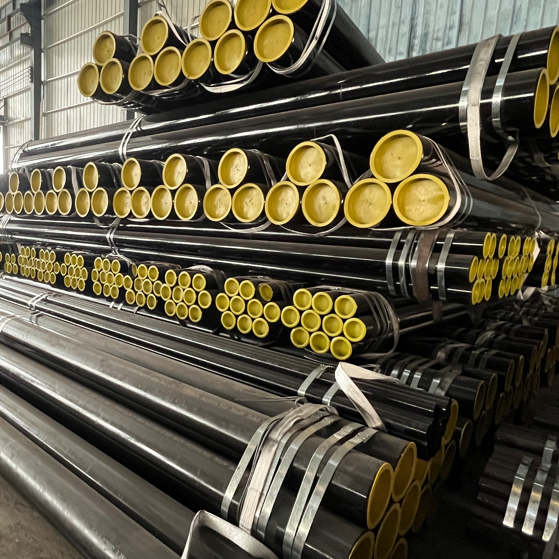Analyze the defects and hazards of BS 4360 welded pipes welding, study the causes of welded tubes welding quality defects, and take effective control measures to achieve high reliability and high safety of welded tubes welding quality, and help safe development of petrochemical enterprises.
Countermeasures for welding quality control of BS 4360 welded pipes
(1) Establish a complete pipeline welding quality management system
①Welding material control: Strictly control the purchase, acceptance, storage and use of welding materials.
②Welding equipment control: Prepare maintenance and calibration plans, calibrate and verify welding equipment on time and as required.
③Welding process control: Complete the welding process assessment according to the technical standards and design requirements of petrochemical construction projects.
④ Based on the conditions of the construction site, formulate pipeline welding process regulations, welding process cards and welding operation instructions, etc.
⑤Control of welding personnel: Hold certificates to work, weld in strict accordance with the process, and continuously improve the welding ability of welders.
⑥Welding environment control: When the welding environment affects normal pipeline welding, the welder should take effective protective measures in time or stop welding immediately.
(2) Strengthen the BS 4360 welded pipes application of non-destructive testing technology
①Improve routine non-destructive testing applications
According to the material, size, structure, etc. of the inspection pipeline, documents such as non-destructive inspection technology construction plans, process regulations, and process cards are prepared. The professional and technical person in charge should provide technical explanations to the inspection personnel, require the inspection personnel to abide by relevant laws, regulations and inspection standards, guide the inspection personnel to correctly carry out non-destructive inspection of pipelines, and ensure the scientificity and accuracy of the inspection results.
In response to pipeline welding defects, inspectors should conduct careful analysis to find out pipeline welding defects and hidden dangers, and report the inspection results in a timely manner to achieve the purpose of pipeline welding quality control and ensure the safe operation of welded tubes. Innovative application of new non-destructive testing technologies By actively innovating new non-destructive testing technologies, we can achieve faster and more efficient welded tubes inspection results and ensure the safety and reliability of pipeline welding quality.
(3) Establish an information platform for BS 4360 welded pipes pipeline welding quality management
①Establish an information platform for optimizing welding processes
Establish a pipeline welding process assessment information database and organize and classify welding process assessment reports for various materials and structures.
②Establish a welder file management platform
The welder file management platform should cover information such as welder number, welder certificate number, level, validity period, and pipeline welding completion status during the process. It should also include auxiliary modules such as quarterly assessment of welders, annual assessment, and skills training.
③Establish a database of information on the entire pipeline welding process
The database includes: non-destructive testing methods, pipeline construction acceptance specifications, welding methods, welding materials, welding joint types, welding defects, reasons for failure, inspection ratio, welder personnel and other information.
 Why should Seamless steel pipes be epoxy powder coated?
Why should Seamless steel pipes be epoxy powder coated?
 ASTM A106 Thick-walled steel pipe production steps
ASTM A106 Thick-walled steel pipe production steps
 Shengtian Group successfully participated in the Russian Oil and Gas Exhibition
Shengtian Group successfully participated in the Russian Oil and Gas Exhibition
 Is API 5L Black Steel Pipe Good For Air Lines?
Is API 5L Black Steel Pipe Good For Air Lines?